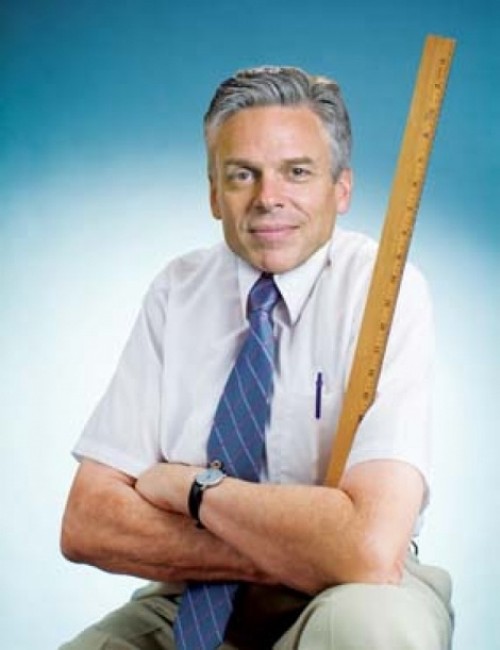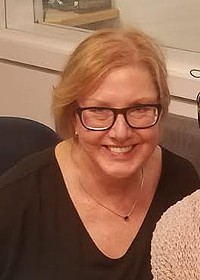Feature | Studied to Death: Can Huntsman finally bring about meaningful education reform?
By Katharine Biele @kathybielePage 3 of 3
No need for a new wheelnKim Campbell, head of the Utah Education Association, really wants to do away with the term “reform.” States that are successful in massive overhauls of public education are those that have stopped talking reform and started talking about “transformation,” she says. n
Campbell was involved in most of the SMART sessions and liked the idea of systemic change. “But the struggles over structural things got the conversation a little off-track,” she says. “Constitutionally, the state school board is responsible for K-12 education.” The state’s Workforce Services, in fact, has been at the forefront of the SMART sessions, and the 21st Century report notes that some participants felt it was improper for groups like these to dictate to the state board. n
“Is there not a way to modify the state office to reflect those agendas without a complete paradigm shift?” asks Rep. Steven Mascaro, R-West Jordan, a member of the governor’s Blue Ribbon Panel on Assessment. “Can’t we fix the wheel we’ve got without a new wheel?” n
Ohio, for one, found it impossible. Ohio went for the transformation model for its high schools only after a successful ballot initiative changed its constitution. This year, Ohio Gov. Ted Strickland plans to broaden the scope and present a funding plan to the state legislature. Nothing happens without money, and both the KnowledgeWorks Foundation and the Bill and Melinda Gates Foundation have contributed substantial dollars to Ohio’s “transformation” effort. n
Dropout rates have declined dramatically after creating “small, personalized schools in previously failing traditional high schools.” n
The strategies are not far from the “Tough Choices” option of getting kids out of school before they drop out. “Ohio established small school models through the Ohio High Schools Transformation Initiative (OHSTI) and instituted Early College High Schools (ECHS) to boost opportunity, choice and relevance for all Ohio students, particularly those in struggling urban districts,” the KnowledgeWorks Foundation reports. n
But what’s possible in Ohio may be a stretch for Utah, even after its summer of SMART session dialogue. “I don’t know where it’s going right now,” Campbell says. “My biggest fear is that we change the structure without looking at it as a systemic effort or it becomes a political football.” n
McKeachnie, meanwhile, is ever the cheerleader. He has to be, since Huntsman has yet to speak up on the process. Calls to the governor’s office routinely get routed to Workforce Services and then to McKeachnie, who frankly is ready to be retired. n
“Our part was the report and now it goes to the governor, who has to decide what to do with it,” McKeachnie says. “They have to decide which plays to run and who’s going to run them. If nothing happens on the implementation side, we’ll end up like ‘A Nation at Risk.’” n
“A Nation at Risk,” a 1983 “Imperative for Education Reform” under then-President Ronald Reagan, was fueled by decades of concern that American schools are failing and touched off the scattershot reform efforts that mark education today. Former University of Utah President David P. Gardner led the study, which has been both praised and denigrated for its consequences. n
That’s the sort of thing that rankles Withers. “With all the criticisms of public education, it continues to be ironic that we’ve had 200 years of the most productive, effective economy the world has ever known. If we’re doing so poorly, those things don’t match,” he says. n
Utah is still last in the nation for per-pupil funding, but student test scores remain OK—or at least not terrible. But watch the sky fall anyway. n
McKeachnie notes that the glass can be half full or half empty. While Utah prides itself on graduating up to 87 percent of its high school students, there are still 5,500 who drop out every year. And half of Utah graduates don’t enroll in any post-secondary school or training center. Half of the remaining half don’t go on to a second year of college. n
Then there’s the question of remediation. Utah’s higher ed community is spending resources to prepare high school graduates for college work. This, McKeachnie believes, is due to the grade promotion system that doesn’t require proficiency first. n
“If we say you’re not going to move to the next subject until you’ve mastered this one, then school becomes relevant,” he says. n
The Salt Lake Chamber of Commerce wants to ensure that mastery. Chamber President Lane Beattie sings the praises of Utah’s educated workforce, but nonetheless, says the chamber is about to formally recommend a statewide math curriculum. n
Kim Campbell and other educators take note of the recurring emphasis on business, maybe even on vocational education, perhaps at the expense of the whole picture, including the arts. And now, even after the SMART sessions and their call for a unified effort, entities like the chamber are forging ahead with their own agendas. n
“Each one of these entities—higher ed, the chamber—they’re all well-intentioned,” McKeachnie says. “But each have their own constituency, their own turf and kingdom; they compete for the same resources, and it’s a rare bureaucrat who’ll say you can do it better than I can.” n
Being a former legislator, he says he knows about the magnetism of micromanaging. “Every legislator is an expert on education because we all went to school,” he quips. Legislators need to focus on implementing one plan rather than instituting a new one every year, he says. n
As Utah looks at the opening weeks of the 2009 legislative session, the tension between the Legislature and Huntsman, the executive, is palpable. They’ve already come to virtual blows over changing the liquor laws, and lawmakers are talking about passing a budget early for the chance to override any gubernatorial veto. n
Thus the most important finding of the 21st Century report: “A more fundamental point participants highlighted was the absence of a coordinating, governing structure and the lack of a central, organizing principle,” the report says. “A vital yet missing element necessary for a statewide workforce plan, according to session participants, is a leadership structure with focused accountability.” n
OK, here’s where it gets fuzzier as the report suggests further study and more assessments, all led by a nine-member State Workforce Alliance Council Core Group “with three private sector members appointed by the governor and other members representing leadership of public education, higher education, DWS, GOED, USTAR, and UCAT,” to use a few acronyms. If not members of those acronyms, then maybe the Board of Regents could take part, the report says. n
There wasn’t really a consensus on the council idea, and the constitutional problem hung over the recommendation like a cloud. But one point was clear: Leadership—from someone—is necessary to effect change. n
You’d think you were hearing about the “Nation at Risk” all over again. Twenty-five years after the “Risk” report, the nonpartisan organization Strong American Schools noted that few of the report’s recommendations had been implemented. Heard that before? “Without vigorous national leadership to improve education, states and local school systems simply cannot overcome the obstacles to making the big changes necessary to significantly improve our nation’s K-12 schools.” n
So, what is different about the 21st Century report than any other of those gathering archival dust? McKeachnie says it depends on someone actually taking action. n
Patti Harrington is staying quiet. So is the governor. Leadership—however you define it—must be waiting for its special moment. tttt
More by Katharine Biele
-
Utah Republicans reject election security program in the name of election security.
Hits & Misses
- Apr 24, 2024
-
Deseret News poll shows Donald Trump skating to another victory in Utah.
Hits & Misses
- Apr 17, 2024
-
LDS General Conference dominates local news while stories on diversity and discrimination take a back seat
Hits & Misses
- Apr 10, 2024
- More »
Latest in News
Readers also liked…
-
Raise a glass for E.L.T Harrison, architect of the Beerhive building on Main
Small Lake City
- Oct 11, 2023





